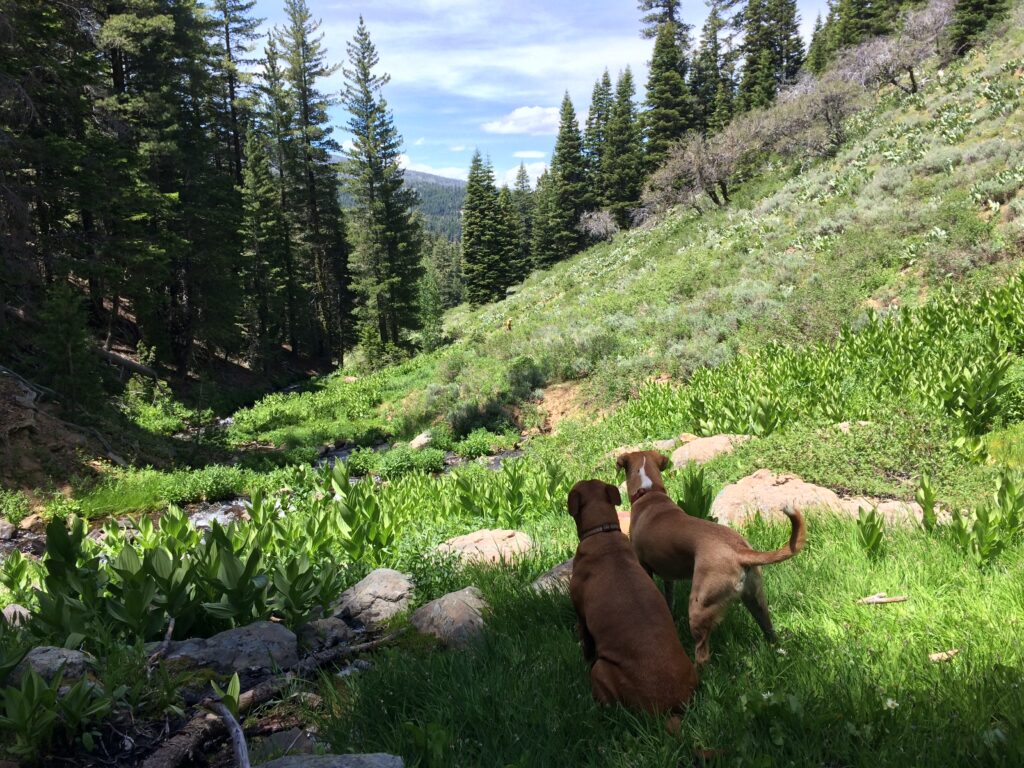Pretty much everybody on the planet has had an unusual year this 2020. For us here in Oregon’s Outback, life has been close to normal except that our pattern of paid work has changed and I no longer have a busy travel schedule. Limitations on tourist travel also affected our camping and collecting year. But overall, living on the outskirts of a tiny town have allowed us to keep up a normal habit of outdoor activities and explorations, albeit closer to home than normal.
Collecting disruptions started early, however, because I had planned to spend a couple weeks of April in the hills near the ocean in SW Oregon. Then lockdowns interfered and the entire trip was canceled. Oddly, 2020 also brought a very poor year for my beloved aphids in SE Oregon. Many species that are normally common almost everywhere I go were rare or impossible to find this year. In fact, sagebrush produced almost no aphids this year until September. Instead, sagebrush was beset by psyllids, leafhoppers, and mirids. I’ve seen this shift away from aphid domination of sagebrush before. We need another graduate student to figure out the ecology behind this phenomenon!
Slow collecting and no work travel left me with more time to work on a major manuscript that I’d been planning for this year – the aphids of Holodiscus. This paper includes information I’ve been gathering since the early 1990s. I’ll have to try to share more details once it is published.
Despite the roadblocks, I made some good progress on several field research efforts this year.
Apparently undescribed species of Aphis.
In our local forests I have been pursuing a handful of Aphis species that seem to be heretofore unknown. One of them lives on various Umbelliferae from our valley floors (about 1200 m elevation) to our mountain streams and peaks above 2000 meters. It has been hard to capture photos of this species because of its very active habit. But, 2020 gave me a good photo op.
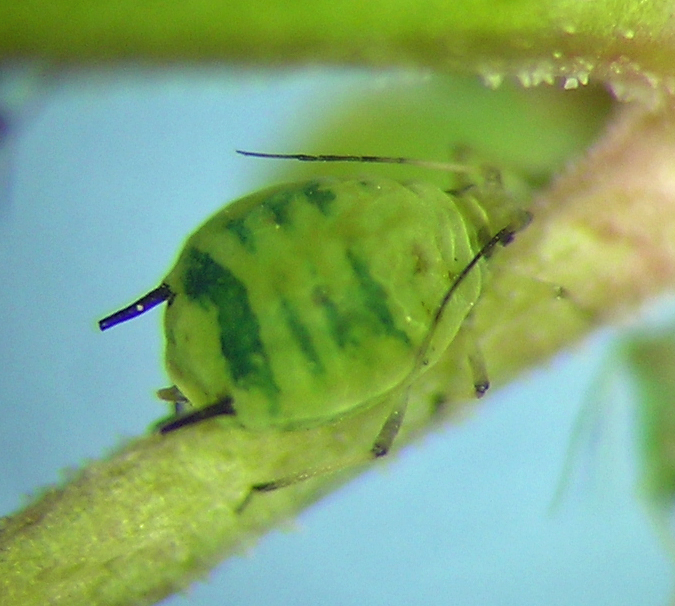
Another Aphis I’ve been after lives on Hackelia (Boraginaceae) at mid to high elevations. It is all black and closely resembles one of the Aphis found on Veratrum (Liliaceae) and one of the species on Valeriana. In life these black Aphis make me think of the group of species that live on Senecio and relatives, but less so when mounted on slides.
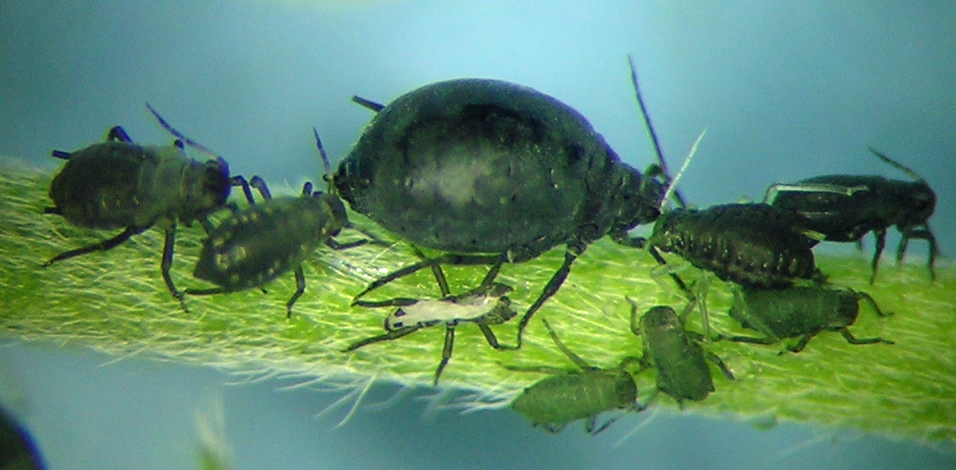
I also had the good luck to find truly massive colonies of the undescribed Aphis species that feeds on Potentilla gracilis. The more I look at this species, with its strange body shape and long apical rostral segment, I wonder if it is related to the subgenus Zyxaphis that feeds on sagebrushes and rabbit brushes.
Important Macrosiphum finds
Early in the season (June) I took a day off from work and collected in our nearby Fremont National Forest. Near the end of the day I found the long-elusive fundatrix of my recently described species Macrosiphum glawatz on Potentilla gracilis. It was living on a nice green plant that was actually rooted in a disused roadway. As with several of my favorite species in this genus, the fundatrix of M. glawatz is almost indistinguishable morphologically from regular early season viviparae. On that same trip I was able to find the fundatrix of the undescribed species that lives on Lonicera cauriana.
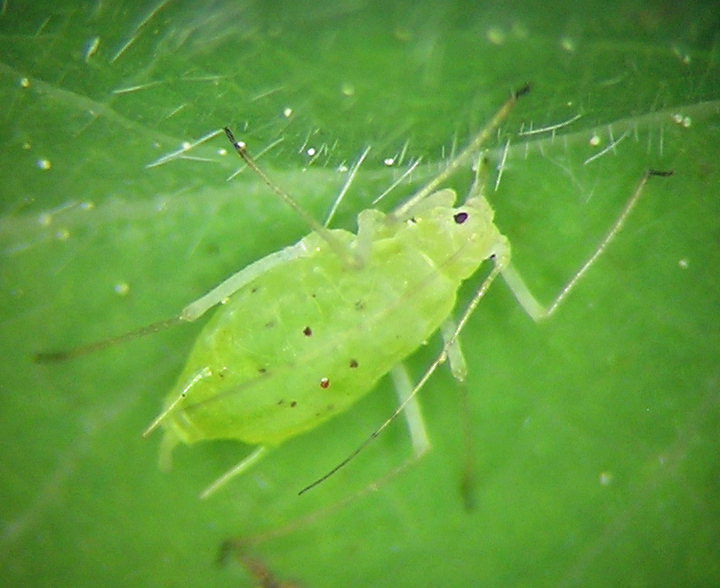
In early July we found a lovely camping site high up in the Ochoco National Forest, near the summit of Spanish Peak. There, I was lucky to find many good specimens of the undescribed Macrosiphum that lives on the sticky forest-inhabiting Silene that grows on certain soil types from the Cascade Mountains east and south. Most important was a presence of the fundatrix stage.
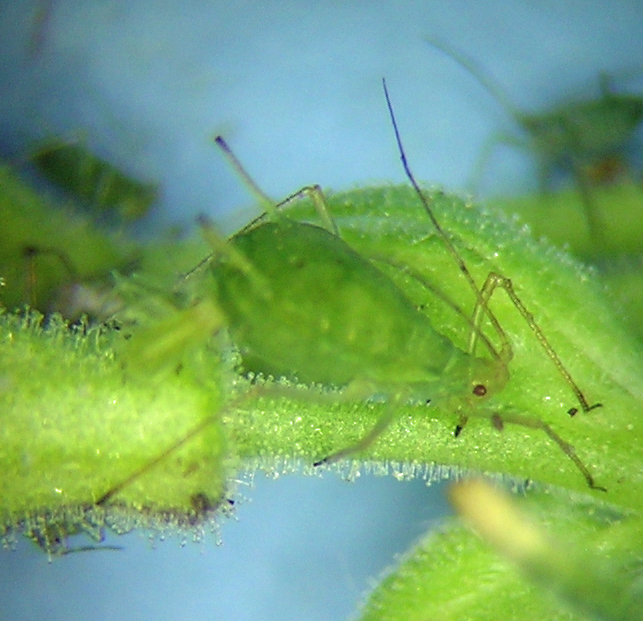
Later in the year, in conjunction with a trip to northern Idaho to visit a good friend, I was lucky to find the bizarre purple Macrosiphum that lives on Trautvetteria. That trip also started a string of finds of the undescribed species that lives on grouse whortleberry (Vaccinium scoparium).
Pseudoepameibaphis – my second favorite genus (for the moment)
Having finished one big paper this year, I am considering making my next one a thorough coverage of what is known about a sagebrush-inhabiting genus called Pseudoepameibaphis. I’ve got lots of new information, hypotheses about host-specificity, and at least two new species. The most exciting new species is one that looks much like a little beetle – it is black and its dorsum is hard and sometimes brittle like a beetle. It seems to live almost exclusively at or near the top of mountain peaks on the category of Artemisia tridentata called mountain sage, and sometimes shares plants with a more typical pale member of Pseudoepameibaphis. On that special day in June I was able to retrace my steps from a couple years before and find this aphid living adjacent to a particular burned and fallen tree on Winter Rim. Many other plants in the area sampled, and only on this plant did this aphid species live. Later in the season I found it on a few plants along a high elevation stream in the Warner Mountains.

A new tent!
I could list a few more exciting finds from 2020, but instead, I’ll finish with the big news of our new bigger tent! It’s great because even a tall stick-figure human like me can stand up in it, and it has a vestibule for shelter in wind and rain.
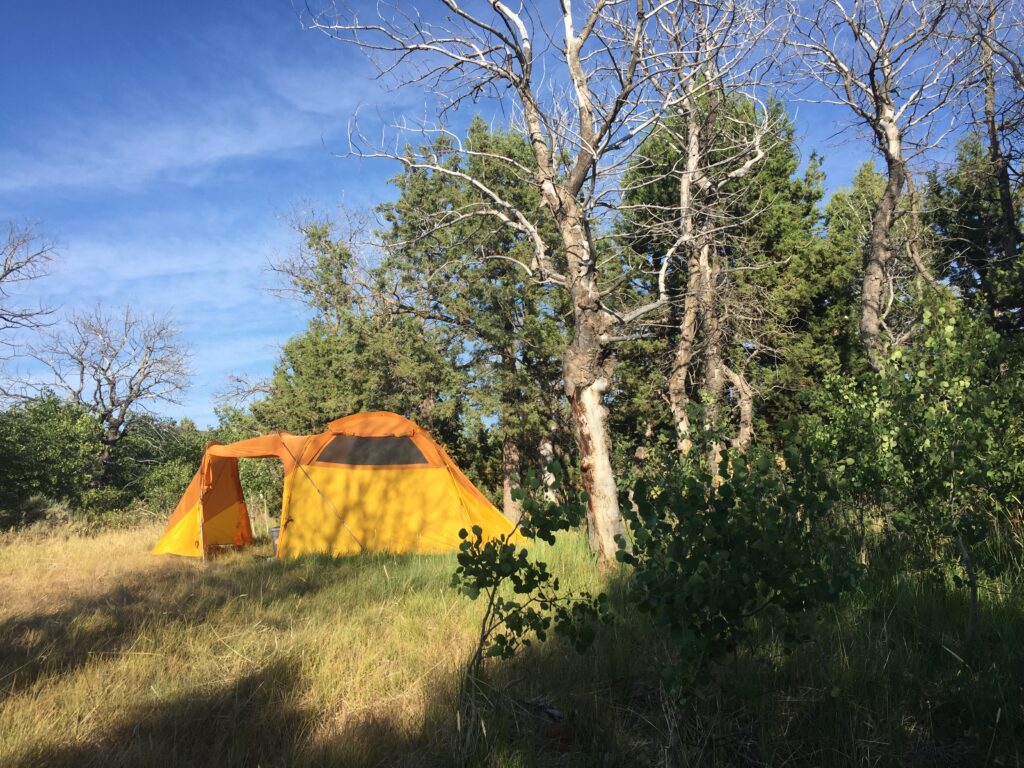
From here on in 2020 and early 2021 it will be finishing slide mounting and then doing some careful curation and species identification, sorting un-identifiable material, and of course making plans for next year’s collecting.
